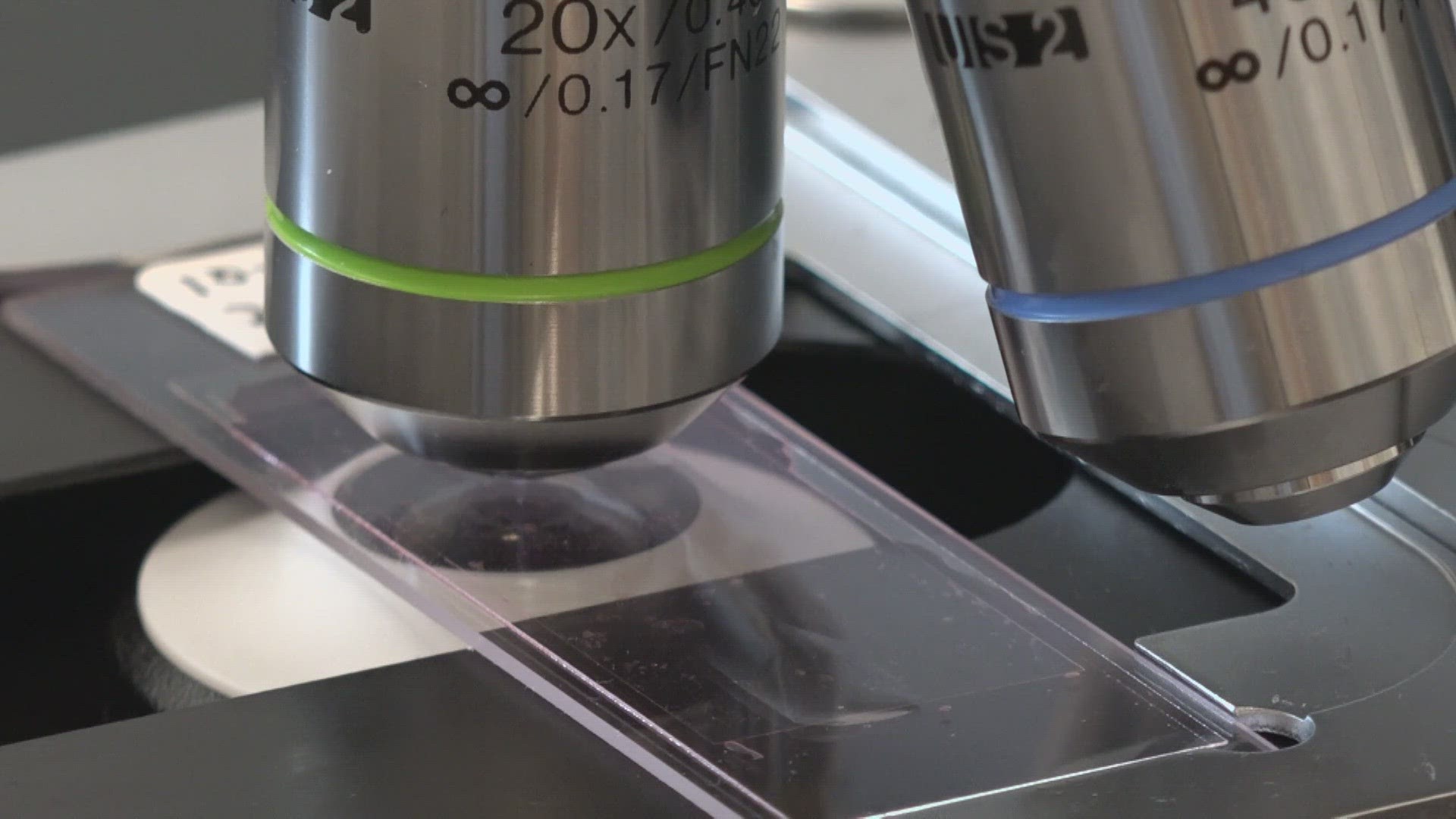BERKELEY, Mo. — Most people have an idea that peak allergy season comes in the spring with flowers and pollen. Fall is a lesser thought of allergy season, but those piles of dead leaves in your yard could be even worse for your nose.
"Because a lot of this is spores," Washington University Allergist and Immunologist at Barnes-Jewish Hospital, Dr. Jennifer Monroy, said. "It's very lightweight [and] travels in the air very easily. It can get up very high and travel miles."
Monroy is talking about allergens — a few in particular have been abundant this season.
"We see mold spores year round," St. Louis County Department of Public Health Laboratory Supervisor, Wayne Wilhelm, told 5 On Your Side. "Right now, the mold count has been in the high to very high range."
Every weekday morning, a member of Wilhelm's team climbs onto the roof of the St. Louis County Medical Examiner's office where there's an instrument that gathers particulates in the air.
"The Burkhardt sampler which has been running since 2000, runs 24 hours a day. It always orientates itself according to the wind direction, so we don't miss any peaks or valleys with either pollen or mold," Wilhelm said.
Air flows through the instrument and contacts a slide, then once a day the slide is pulled out and examined under a microscope.
"We magnify them to 400 and 1000x magnification," Wilhelm said. "An analyst goes through identifying and counting them one by one."
Recently, the team at the St. Louis County Department of Public Health counted a lot of mold spores that were collected on the Burkhardt sampler slides.
"Particularly as the leaves start to fall and there are a lot of dead leaves, mold counts will increase," Monroy said as she explained why there are more mold spores in the air.
No surprise, mold from dead leaves can cause allergy flair-ups.
"In the fall, with the mold and the weeds, I tend to see a shift where more of it is sinus pressure and more of the sinus headaches that come about," Monroy said.
She said wearing a mask outside could help ease your symptoms. In addition, because allergy symptoms can be similar to cold, flu and COVID-19, limiting infection through vaccination is something Monroy recommended to her patients. Click here for a link to sign up for immunizations.
There is a light at the end of the tunnel for allergy sufferers, November to January is typically a quiet time of year for all allergens, including mold.

